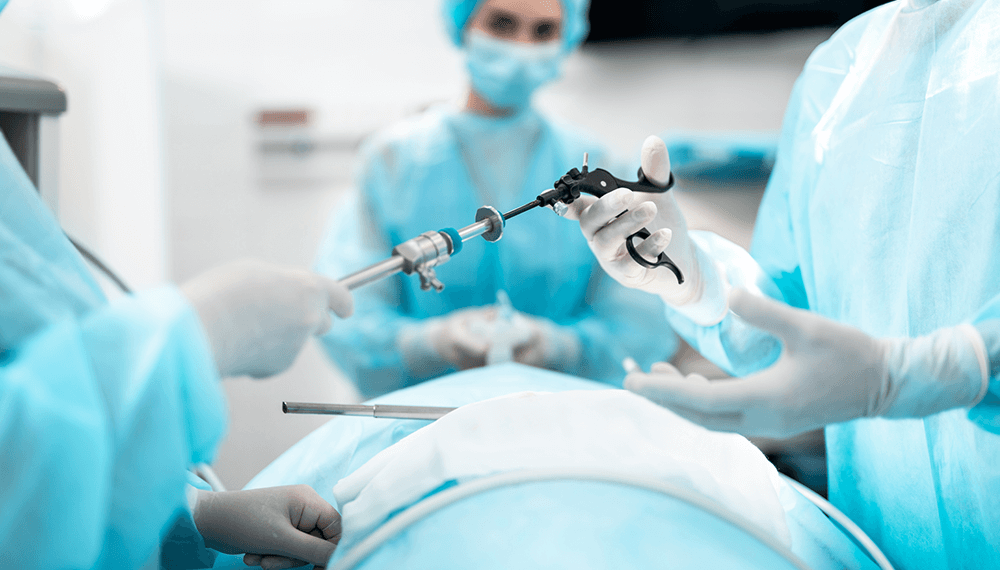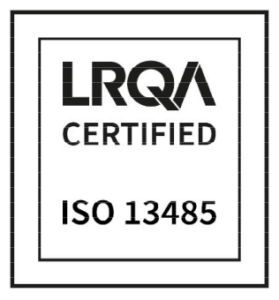Gluteus Medius Repair and Augmentation
Hip Arthroscopy
Hip Arthroscopy
With a team of industry innovators and a focus on safety and simplicity, CONMED is leading a paradigm shift in hip arthroscopy.
CAM and Pincer Decompression
Signature Series™ Pre-Bent Burs allow surgeons to access hard to reach areas during femoroacetabular impingement procedures
CAM and Pincer Decompression.
The right burs for the job
When performing an arthroscopic repair for FAI, osteoplasty and rim trimming are done by shaving back the cam and/or pincer bone spurs to re-create normal bone shapes of the femoral head and acetabulum. CONMED’s Signature Series™ Pre-Bent Burs allow surgeons to access hard to reach areas within the joint space to successfully shave down the bone spurs. Accessing these areas with the pre-bent burs may also eliminate the need for a posterolateral portal. An arthroscopic approach has proven favorable outcomes and safety compared to open and mini-open methods.1,2

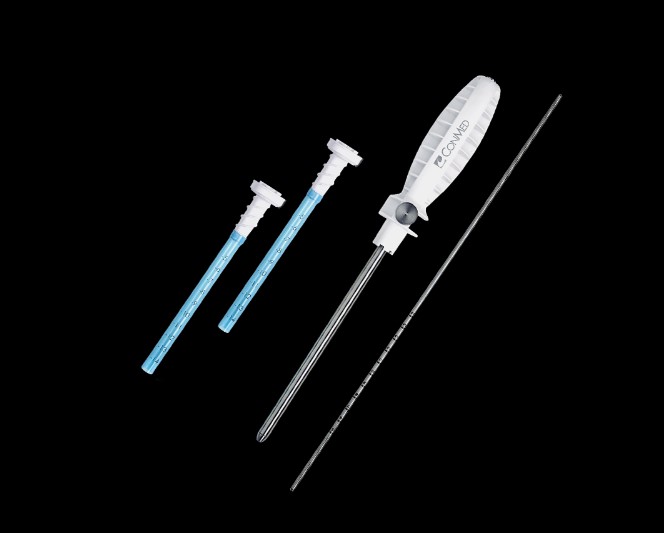
FAI with Labral Tear Repair
The Paradigm® Hip System features an all-in-one solution for access and repair
The Paradigm™ Hip System features an all-in-one solution for arthroscopic access into the hip joint and repair of the labrum.
Femoroacetabular impingement, also referred to as FAI, is a condition resulting from bone overgrowth on the femoral head (known as cam spurs) and/or on the acetabulum (known as pincer spurs). These bone spurs create abnormal contact in the hip joint, which can result in damage to the labrum and/or the articular cartilage. Surgical treatment consists of addressing both the labral repair and the bony deformity that caused the issue.
Gluteus Medius Repair and Augmentation
Suture anchor repair for smaller tears and allograft augmentation for larger tears
Repair of the torn gluteus medius tendon has been shown to improve Harris Hip Scores by up to 66%.1
Much like the muscles of the rotator cuff, the gluteus medius is susceptible to partial and full-thickness tears, resulting in lateral hip pain or weakness for many patients. The gluteus medius tendon can be repaired in a variety of ways depending on the severity of the tear. Partial-thickness tears can be addressed by inserting suture anchors transtendinously, preserving intact tendon fibers.
Full-thickness tears can be addressed using suture anchors similarly to a full-thickness rotator cuff tear, but an allograft patch may be necessary to augment the repair in cases of poor tissue quality. An allograft augmentation can provide structural stability and biologic healing factors to aid in tendon healing.2
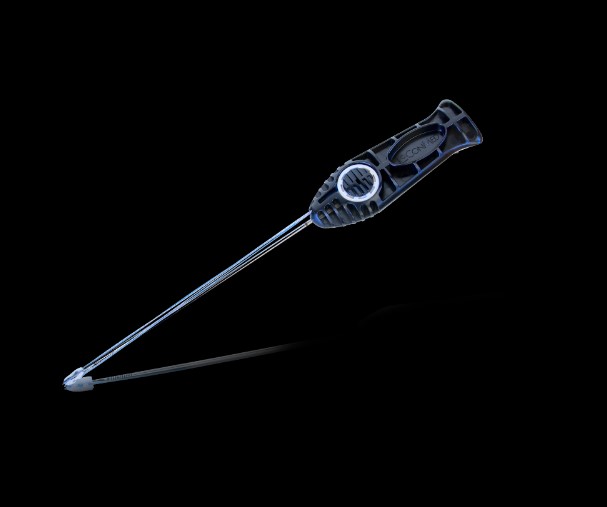
Paradigm® EZ Switch® and Access Kit
Suture anchor repair for smaller tears and allograft augmentation for larger tears
Say goodbye to the sleds and switching sticks of rigid, motion-restricting cannulas.
The Paradigm® EZ Switch® was designed to save time. Easily switch portals without sleds or switching sticks! The flexible design allows for wide range of motion and the customizable body length can be easily trimmed to match patient anatomy. Get up to 150mm working length to enable optimal access into the joint. 30mm of dual lead threads are designed to provide strong dermal fixation.
Available in convenient all-in-one kits, the Paradigm® Hip Arthroscopy Access System is designed to provide surgeons with simple, safe access to the hip joint with a more efficient, reproducible technique for hip arthroscopy procedures. Two kit configurations are available to meet your technique needs.
Paradigm® Tactile Access Kit and EZ Switch® System
- (1) Paradigm® Tactile Needle
- (1) Paradigm® Access Needle
- (2) Guidewires
- (1) Cannulated Obturator
- (1) Reference Tool
- (2) Paradigm® EZ Switch® Portal Savers
Paradigm® Access Kit and EZ Switch® System
- (2) Paradigm® Access Needle
- (2) Guidewires
- (1) Cannulated Obturator
- (1) Reference Tool
- (2) Paradigm® EZ Switch® Portal Savers
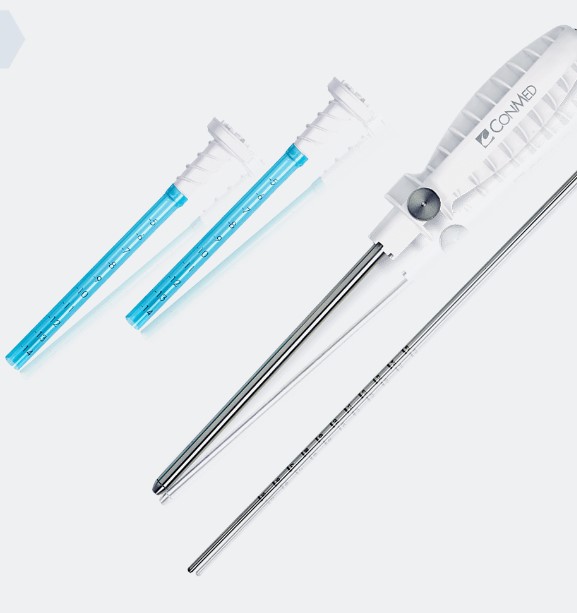
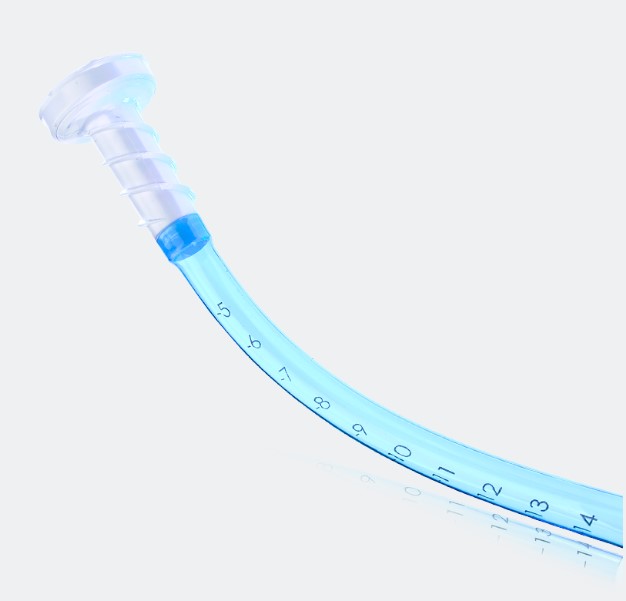
Info Contact
| HEAD | OFFICE |
| Tel | +27 (11) 966 0600 |
| info@medhold.co.za | |
| Address | MSI Business Park, 68 Rigger Road, Spartan, Kempton Park, Gauteng, 1619 |

